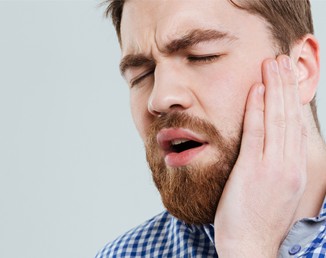
What is a tooth abscess?
A tooth abscess or dental abscess is a pocket of pus that builds up in the gums or teeth. It’s usually caused by an infection or injury in your mouth. If you have a tooth abscess, you will need to be treated by a dentist. A tooth abscess will not go away on its own, and could cause further damage if not treated.[1]
There are three types of tooth abscess, based on where they are found in your mouth. These are:[1]
- Periapical tooth abscess – this is found at the base of your tooth, down below the level of your gums
- Periodontal tooth abscess – this occurs in the gum next to the root of the tooth
- Gingival tooth abscess – this is found in the visible area of your gums around your teeth
What causes a tooth abscess?
A tooth abscess can be caused by anything that leads to a buildup of pus beneath your gums or teeth. Some examples of things that might cause a tooth abscess include:
- Tooth decay
- Gum disease
- An injury to your mouth, teeth or gums
- A tooth that hasn’t grown out of your gums properly (also known as an impacted tooth)
- Exposure to radiotherapy or chemotherapy
If you suspect you have a tooth abscess, but don’t have any of the conditions mentioned above, you should still consult your dentist. Any condition causing intense pain should be treated as soon as possible to avoid further damage.[1]
What does a tooth abscess look like?
Tooth abscesses can look different depending on how much pus has built up, but there are some signs you should look out for. These include:[1]
- Redness on the gums, the inside of your mouth or on your cheeks or jaw outside of your mouth
- Swelling in your face or jaw
- A discoloured and/or loose tooth
- Shiny and/or swollen gums
- A ‘bubble’ of pus on your gums
How to treat a tooth abscess
A tooth abscess will not go away on its own, so it’s important to seek the attention of a dentist as soon as possible. They will pierce the pocket of pus and drain it away so it doesn’t cause pain anymore. Usually, this will be done under local anaesthetic. A root canal treatment may be necessary, but in some cases, they may have to remove the affected tooth instead.
If you can’t get to a dentist immediately, there are things you can do to ease the pain until treatment is available.[1]
- Pain management techniques
Taking painkillers such as ibuprofen or paracetamol can help to relieve pain until the problem can be solved. Always be sure to follow the dosage instructions on the packaging. You might even be able to use an anaesthetic from a dental repair kit. Alternatively, you could try other methods of pain relief such as ice packs or warm compresses.[1]
- Food and drink
When you have an abscess, you may find it difficult or painful to chew, so it’s best to stick to soft foods such as mashed potatoes, yoghurts, soup or scrambled eggs. It may be tempting to try ice cream to ease pain, but very hot or very cold foods can cause flare-ups of pain. Similarly, avoiding sugary food and drinks can help to stop things getting worse.[1]
- Keeping your teeth clean
It’s important to continue caring for your teeth, even when pain might make it tempting to not brush. Try to use a soft bristled toothbrush to avoid causing any more damage.[1]
How to prevent tooth abscesses
As with other dental conditions, the best thing you can do to prevent tooth abscesses is to take good care of your teeth. You should:
- Brush twice daily with a fluoride toothpaste
- Carefully clean between your teeth with floss picks or interdental brushes
- Have regular dental checkups to spot any problems early
It’s a good habit to get into to replace your toothbrush every one to three months, or when you notice the bristles starting to fray. Using a fluoride mouthwash can also help maintain your dental health, but you shouldn’t use it immediately after brushing. Some people prefer to use mouthwash after eating instead.[2]
Resources:
[1] https://www.nhs.uk/conditions/dental-abscess/
[2] https://www.nhs.uk/live-well/healthy-teeth-and-gums/how-to-keep-your-teeth-clean/




